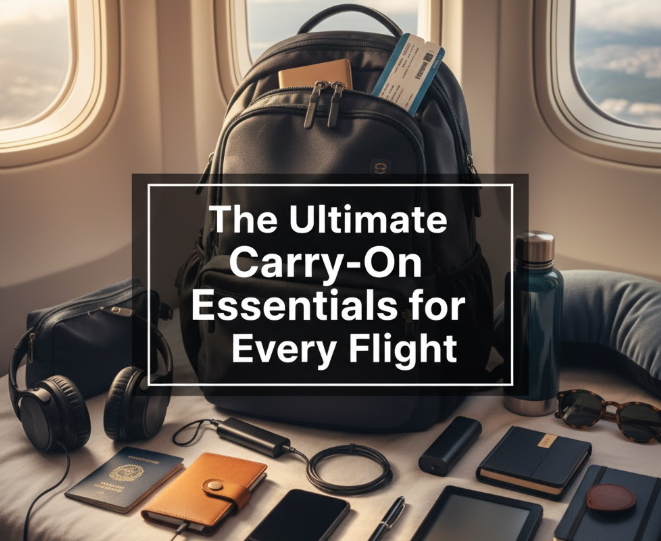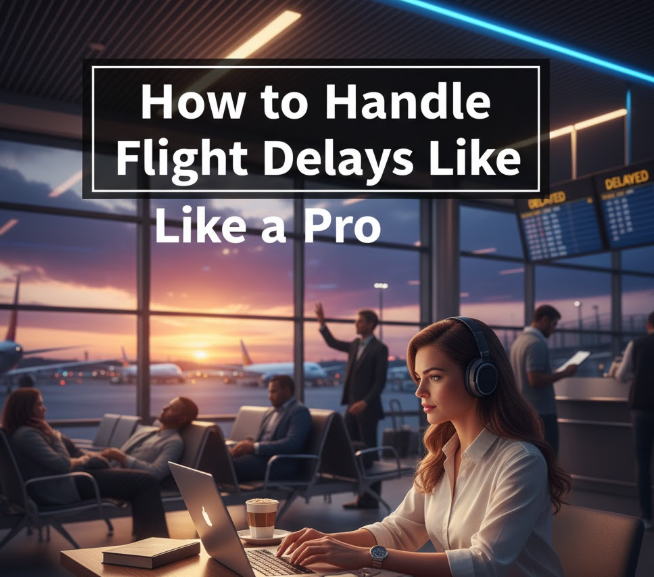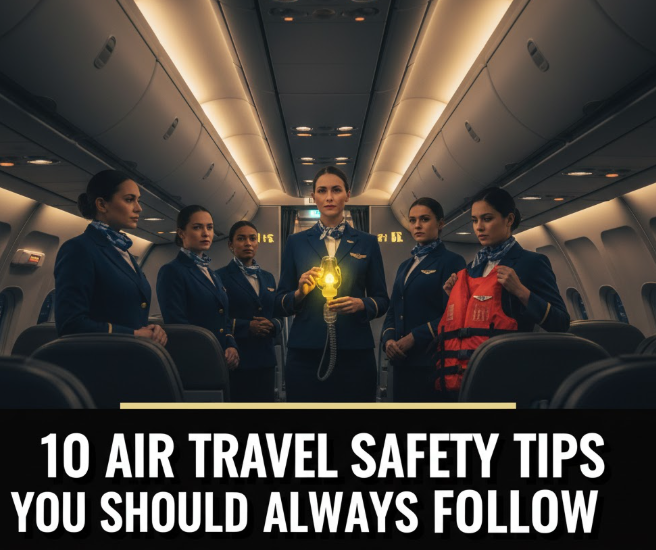Flying can be thrilling, nerve-racking or something in between. Whether you’re getting on a plane for a quick weekend getaway or the beginning of an extended international journey, what you decide to pack in your carry-on bag can determine the success or failure of your travel overall. All of the right incidentals to keep you comfortable, entertained and living your best life up at 30,000 feet.
This how-to guide covers everything you need to pack the perfect carry-on. From essential documents to comfort supplies and in-case-of-emergency gear, here’s exactly what you should have in that bag you’re clutching during that flight. No frills, no extras — just practical essentials that seasoned travelers swear by.
Documents and Money Matter Most
Before anything else gets into your carry-on, you’ll want to pack up your papers. These are the absolutely non-negotiable things you cannot possibly check — from boom boxes to blue jeans.
Your passport (if you are flying internationally) or government-issued identification (on domestic flights) should reside in a pocket that’s easy to access. A travel wallet or document organizer can be handy to keep everything together for many travelers. You’re going to need both your ID and boarding pass, even if you’ve gone all-digital with travel apps on your phone — airlines occasionally have system meltdowns, and an old-fashioned printout provides peace of mind.
And, of course, don’t neglect any visas, travel insurance documents or vaccination records that your destination dictates. Hotel confirmations and rental car reservations are also useful, especially if your phone dies or you lose internet access.
Have some cash in the local currency if you’re flying internationally. Only bring small stuff like no more than $50-100 dollars in cash is good, it will cover all the tips and most of what you are going to buy (in case machines don’t work). Divide your money between pockets or compartments—don’t carry all of your cash and cards in the same place.
Electronics to Stay Connected and Entertained
Travel now is powered by batteries and screens. The contents of your electronics arsenal can make the difference between handling long flights and unexpected delays with aplomb, or panicking as you switch to airplane mode.
Your smartphone is a given, but your charging cables and portable battery pack are just as important. Airlines don’t always have functioning outlets and airport charging stations can be impossibly slow. With a 10,000-20,000 mAh power bank you’ll get multiple full charges for your phone and be able to juice up tablets too.
Noise-canceling headphones are life-changing for flying. They drown out crying babies, bickering passengers and engine roar. And if you don’t have noise-canceling ones, any decent pair of headphones is better than the flimsy earbuds airlines offer. And don’t forget the adapter if your headphones have a nonstandard jack — some airplane entertainment systems use unique plugs.
Long flights are also made less tedious with tablets or e-readers that have books, movies or games galore. Download before you leave the house, since airline WiFi is expensive and consistently garbage. If you have to work and need a bigger screen for play, it makes sense to get a lightweight laptop.
And don’t forget the little things: A multiport USB charger allows multiple devices to be charged at once, and a universal travel adapter is great if you have a layover.
Medications and Health Supplies Take Priority
Your health is not going to wait for checked baggage. Prescriptions should be packed in original containers with the labels on their covers. Take more than you’ll need for your travel — flights get delayed, and you don’t want to run dry.
Over-the-counter medicines should also go in your carry-on bag. Bring pain relievers like ibuprofen or acetaminophen, anti-nausea medicine for airsickness, antacids for upset tummies and allergy medication if you need it. For minor injuries, rely on a small first-aid kit containing band-aids, antibiotic ointment and blister care.
Hand sanitizer (3.4 ounces or smaller) holds germs at arm’s length in an airplane, which is a factory of germs. Disinfectant wipes allow you to wipe down your tray table, armrests and even the seatbelt buckle before getting comfortable. Research shows these surfaces are disgusting.
Bring a prescription and a spare pair if you wear glasses. Contact lens wearers should pack solution and a case, as well as backup glasses. Your eyes dry out in airplane air, so you need some artificial tears or rewetting drops.
Face masks still make sense for flights, even when they’re not mandated. Cold and flu bugs spread through recycled cabin air like wildfire. The best defense against getting sick is wearing an N95 or KN95 mask.
Comfort Items Make Flying Bearable
Airplanes weren’t designed for comfort. These are things that prevent you from showing up too miserable.
A travel pillow cradles your neck while you nap. There are the popular U-shaped ones, of course, but some people like the wrap-around style or inflatable versions that pack down smaller. Experiment first with various types to discover what suits your sleep style best before heading off on a long trip.
Use blankets or oversized scarves as both warmth and pillows. Planes are cold and airline blankets are thin (if they’re even available). A compact travel blanket or a nice warm pashmana scarf helps fight those arctic temperatures without taking much room in your carry-on.
A sleep mask blocks the light so you can snooze, even if your neighbor would prefer to have their reading light on. Cabin lights go on at strange hours, particularly if you’re flying an overnight flight. Seek out contoured masks that don’t bear down on your eyelids.
Compression socks help keep your feet from swelling and prevent blood clots on long flights. And it’s not just for old people — sitting is sitting, and everyone wants a little better circulation. Best to strap them on before the flight gets underway.
Unless you are a fan of overpriced airport food and mystery airplane meals, pack some snacks. Protein bars, nuts and dried fruit, or crackers ease hunger. Limit your intake of pungent foods out of respect for fellow travelers. An empty water bottle makes it through security and is filled up at the water fountains after, saving cash and staying hydrated.
Toiletries and Personal Care Products
The 3-1-1 rule restricts liquids to bottles that are no larger than 3.4 ounces (100ml), all of which must fit in one quart-sized clear plastic bag. Your carry-on toiletries must work within these parameters.
Toothbrush and toothpaste (travel-size) freshen up your mouth after meals or before landing. Your seat mates will thank you, too. Deodorant saves you from becoming “that” person on a crowded plane — solid is better than liquid given the sizing requirements.
Moisturizer and lip balm fight the super-dry airplane environment that leeches moisture from your skin. Use a small container of face moisturizer and a good lip balm so you don’t arrive looking like Mad Max. Avoid anything heavily scented that could be disruptive to other passengers.
Feminine hygiene products are a carry-on, not checked luggage essential. Pack more than you think you need: You could end up sitting on the runway for two hours or miss a period due to stress around travel and time zone changes.
Hair ties, a small brush or comb and bobby pins tidy up your look after a long flight. Baby wipes or face wipes are a way to clean up without requiring access to a sink. Also a good way to freshen up during layovers.
For overnight flights, you may want to also incorporate travel-size facial cleanser, makeup remover and moisturizer. Handy to carry: A small bag of cotton pads or swabs.
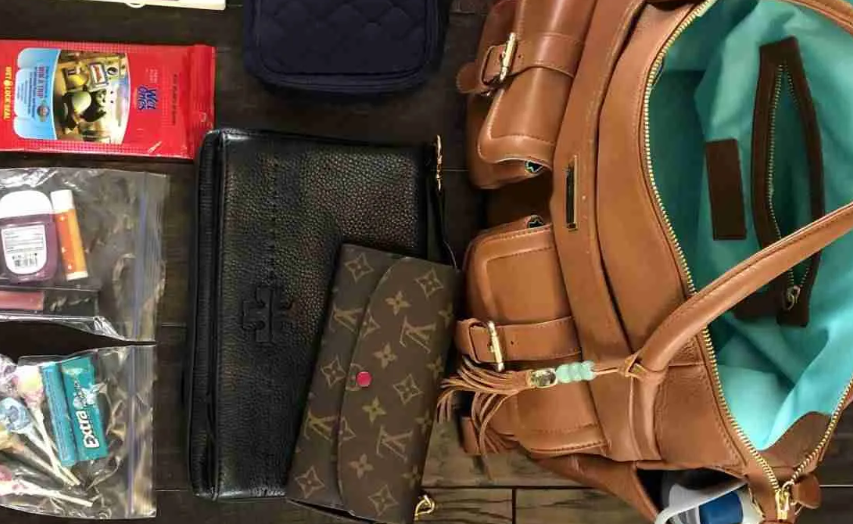
Clothing Changes Save the Day
Even if you are not checking bags, a change of clothes in your carry-on prevents disaster.
Put a whole outfit, including underwear and socks, in your carry-on even if you are checking baggage. Bags get lost, drinks are spilled and sometimes there’s an accident in the bathroom. Having that extra pair of clean pants available means you can change out of your coffee-stained pants for the rest of your trip.
A lightweight jacket or a hoodie deals with temperature swings from hot airports to freezing planes. Layers are better than one heavy thing because you can add or subtract to accommodate changing conditions. That extra layer can double as a pillow in a pinch.
Pack your bulkiest clothes and shoes to wear on the plane if you are traveling somewhere with different temperatures or activities. This also helps to save space and weight in your bag.
Entertainment Beyond Screens
Digital entertainment can’t compete with a low battery level or when you need a break from screens. Old-school options still work.
A good book or a magazine is the perfect time-killer without that battery-draining screen. Physical books never run out of battery, even if they are heavier than an e-reader. Magazines are lighter, and they get thrown away after people read them.
A small notebook and pen means you can journal, list-make, sketch or even work on creative projects. There is some truth to the idea that people are better able to think on paper than they can on a computer screen. Travel journals preserve memories and kill time during layovers.
For groups stuck waiting long hours but enjoying one another’s company, playing cards or small travel games entertain. A deck of cards is a tiny, feather-light thing that includes millions of games. Puzzle books such as sudoku or crosswords exercise your brain.
Must-Have Gear and Gadgets
These are not otherwise categorizable items that you make room for in your bag.
A reusable shopping bag or packable daypack provides bonus carrying capacity. It stores souvenirs for the ride back, and then serves as a personal item under the seat. They pack down small when they’re empty.
Various sizes of ziplock bags are perfect for sorting small items, protecting electronics from spills and storing wet clothes or toiletries. They also make the perfect airplane snack container or for keeping your phone dry by the water.
A pen writes out customs forms and other papers. Not every airline gives them out anymore, and airport pens tend to walk away. Stow one in an accessible pocket.
Sunglasses shield your eyes at your destination and in layovers. Users of prescription sunglasses are encouraged to carry regular glasses as a spare.
A tiny flashlight (like a keychain light) comes in handy to find an item inside dark overhead bins or grope around a dimly lit connection. Your phone’s flashlight is a battery killer.
Carry-On Packing Strategy
It is not only what you pack that matters, but how you pack. A well-organized bag equals less digging and less stress.
Packing cubes keep like items together. One cube for electronics and cables, one for toiletries, one for clothes — you get the idea. This system allows you to locate things easily without emptying your bag.
Store your most essential items in easy-access pockets: wallet, phone, headphones and snacks. Nothing you need during the flight should be at mid-trip unless it doesn’t disturb neighbors or require you to stand up.
Heavy things at the bottom near the wheels if you are using a rolling bag, or by your back in a backpack. This balances better and is easier to carry.
Put lip balm, gum or mints, hand sanitizer and any paperwork you will need right away in an outer pocket as a “just landed” kit. You can spread out and get ready for arrival without rifling through everything.
Stuff You Should NOT Pack in Your Carry-On
Knowing what not to pack is as significant as knowing what should be packed.
Scissors, knives (even little ones) and tools are taken by security. If you need these things, they get checked. This also applies to full-size toiletries larger than 3.4 ounces.
Anything that is costly jewelry or irreplaceable should not be flying at all except under extreme circumstances. If you have to take them, hold onto them in your carry-on, where you can keep an eye on them — not checked bags.
Pass on pungent food, messy snacks or anything that could leak. Your seat mates don’t want to smell your tuna sandwich, and a shampoo bottle that pops open turns into a mess for everything else in your bag.
Smart Carry-On Options for Various Trips
Your essentials will vary based on the type and length of the trip.
Weekend Trips: Limit changes of clothes but maximize entertainment and comfort. You’re only there 2 to 3 days, so concentrate on being comfortable in the air.
Long-Haul Flights: You need more entertainment diversity, extra snacks, better comfort aids like compression socks and neck pillows, and fully stocked toiletry kits for freshening up mid-flight.
Business Travel: Pack wrinkle-free pieces and professional-looking gadgets. Your work and files are more important than your comic book collection.
Family Travel: Multiply everything by the number of children. Each kid requires their own entertainment, snacks, comfort items and backup clothing. Parents become pack mules, but the alternative is in-flight meltdowns.
For more travel tips and booking assistance, visit Call to Flights.
Quick Reference Carry-On Checklist
Documents:
- Passport/ID
- Boarding pass
- Travel insurance
- Visa documents
Money:
- Cash
- Credit cards
Electronics:
- Phone
- Chargers
- Power bank
- Headphones
Health:
- Prescription meds
- Pain relief
- Hand sanitizer
- First-aid supplies
Toiletries:
- Toothbrush and toothpaste
- Deodorant
- Moisturizer
- Lip balm
Clothing:
- One full change of clothes
- Jacket
Comfort:
- Travel pillow
- Sleep mask
- Snacks
- Water bottle
Entertainment:
- Book/magazine
- Notebook and pen
Final Thoughts on Carry-On Success
The goal for packing your carry-on isn’t to make sure you have everything you might need on the plane. It’s about strategically packing the right basics to maximize how happy, comfortable and safe you are on the road.
Start with your non-negotiables: documents, medications and valuables. It only gets more complicated from there based on trip duration, destinations, safety constraints and personal needs. Everybody’s essentials list looks a little different — a business traveler prioritizes differently than a family going to Disney World.
The trick is to think all through your trip from home to destination. What are your needs while in the air? What is irreplaceable if your checked bag disappears? What makes you personally comfortable? Be honest in your responses here, and you’ll be traveling smart as opposed to overpacking.
Just remember you are not moving there for good. Stores, hotels and amenities will be accessible at your destination. Forsake the temptation to pack for every conceivable situation — pack as though some of your needs are couched in probability rather than suffer some perceived emergency without an easy fix.
With practice, you’ll figure out your own system and never question what to put in your carry-on for any trip again. The objective is to show up at the place you’re going comfortably, prepared and able to experience your destination rather than stressed, uncomfortable and regretting what you packed.
Safe travels and may your carry-on fit in the overhead bin on the first try!
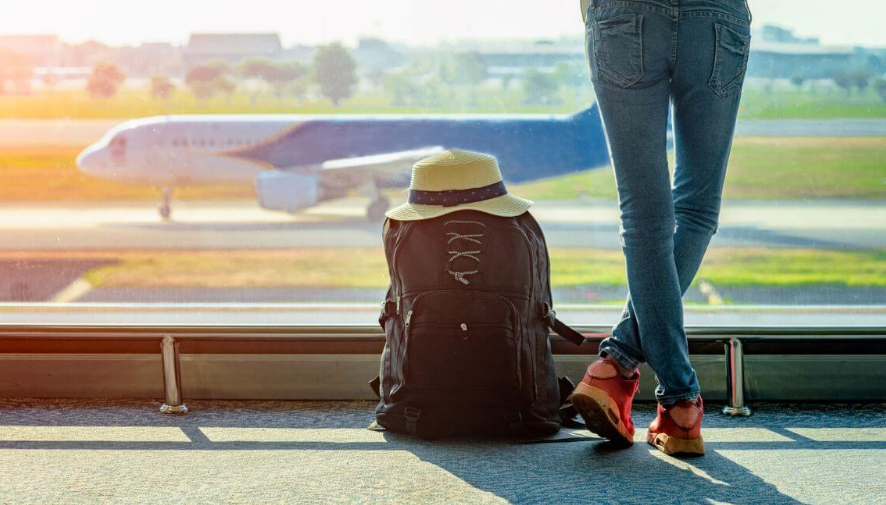
Frequently Asked Questions
How big should my carry-on be?
Carry-on size limits are typically 22 x 14 x 9 inches (56 x 36 x 23 cm) or less, but can vary by airline. Lower size limits are common on budget carriers. Be sure to review your specific airline’s website when traveling. If in doubt, lean toward a little small rather than fighting to stuff an oversized bag into the overhead bin.
May I bring food through airport security?
Yes, solid foods clear security with ease. Liquids, gels and other spreadable foods (yogurt, peanut butter or hummus) are all subject to the 3.4-ounce rule. Sandwiches, fruit, chips and candy bars are all okay. Do be mindful of strong odors while eating on the plane, however.
How much cash should I take abroad?
Shoot for $50-100 in the local currency of your destination for instant needs like tips, taxis or small purchases. Money can generally be exchanged at airports or drawn from ATMs upon arrival. Also hang on to some US dollars if that’s your home currency. Never keep all your money in one place and use pockets, a travel companion or a hidden pocket to hide some of it.
Is liquid in prescription bottles an exception to the 3-1-1 rule?
Prescription medication is allowed in any quantity, but medications should be stored in their original prescription bottle. You may also need to declare larger liquid medications through security. Other liquids still have to stay within the 3.4-ounce limit, even in prescription-style bottles.
Should I pack any differently for an international versus a domestic flight?
Yes. International flights need your passport, may call for visa documents (so make sure they’re in order), usually last longer (so more entertainment) and might require a different sort of plug adapter. You will also need any necessary vaccination records. Domestic flights are easier with an ID and typically shorter flight times.
What is the best way to store cables and chargers?
Keep cables organized in a small electronics organizer pouch, or even a glasses case. Wrap each wire separately with a twist tie or Velcro strap. Use tape or tags to label bundles of similar-looking cables. Separate the chargers you’ll need during your flight (phone charger) from those that require access upon arrival.
Can I take an empty water bottle through security?
Absolutely! And it’s actually a savvy money-saving approach. Pack an empty reusable water bottle in your carry-on and fill it up at the water fountains by the gates after you make it through security. You’ll stay hydrated without spending $5 on a bottle of water. Collapsible bottles are even more compact when empty.
What if my carry-on bag is too heavy?
Different airlines have different carry-on weight limits, generally from 15-22 lbs (7-10 kg). Should it turn out that yours is too heavy at check-in, you may have to check the bag for an extra fee or take stuff out. Wear whatever you have that’s the bulkiest, put on your heaviest clothes and shoes and then transfer items to your personal item bag if possible. A smaller carry-on bag is good when it comes to maximizing what you can pack inside.


